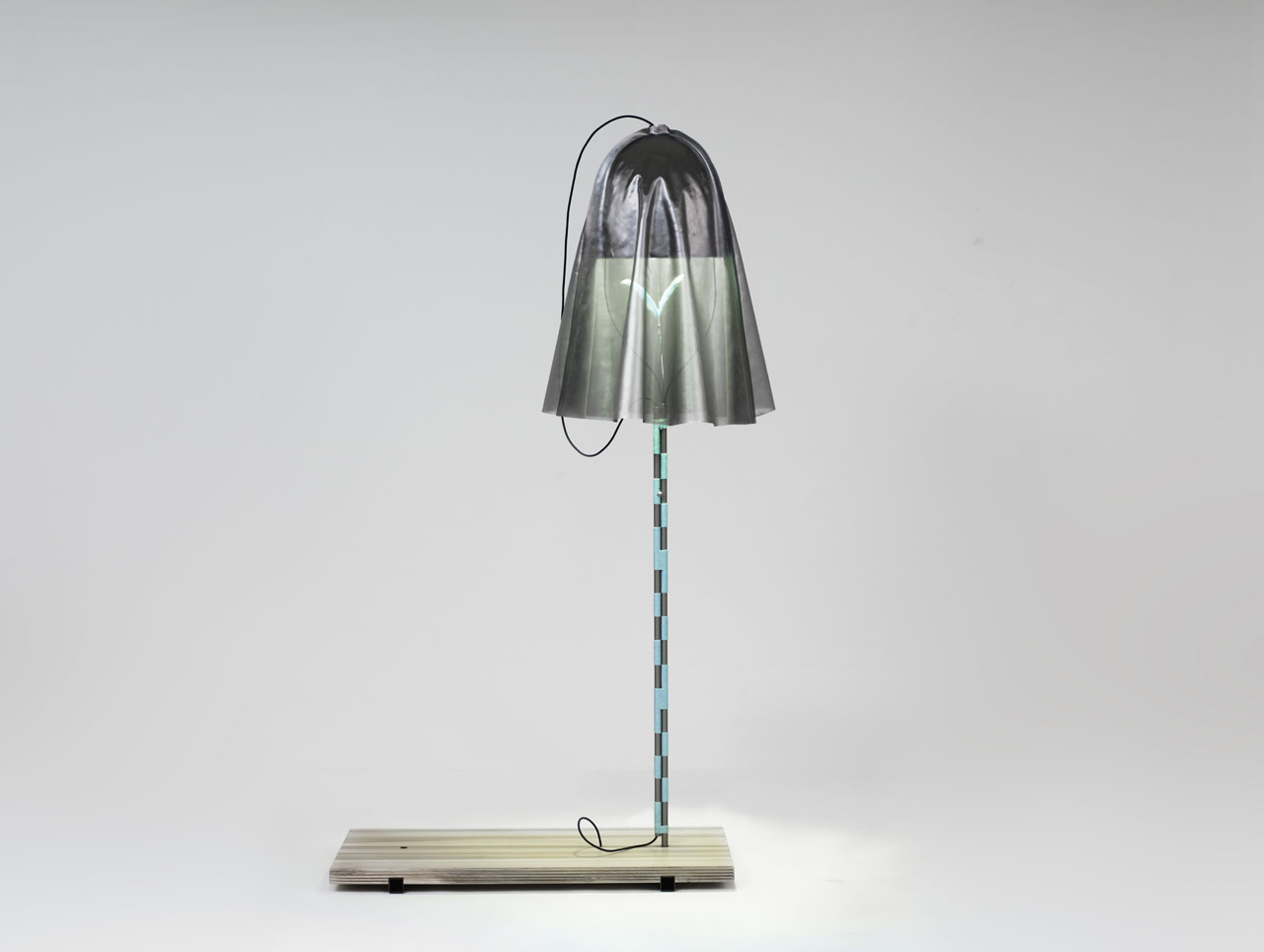When it comes to nominating your favourite product for the year there is always a lot at stake. Imagine my consternation when I double-checked the release date of my outright, unquestionably favourite product of 2014 - only to discover that it was actually released in the second half of 2013. A flurry of frantic activity followed but in the end I decided that if a group of products can still be resonating with me a whole 18 months later - particularly after the variety of new releases that I have been witness to - then why not showcase them regardless? Okay, so they can’t win the best of 2014 accolade but they are totally remarkable and seemed to have pushed all of the legitimate 2014’s contenders from my mind with their sensitive aesthetic and delightful personalities.
The Mitate collection of seven floor lights exhibited at Galerie Kreo in Paris in June through September 2013, are an extraordinary culmination of two years of researching materials and fascination with the culture and history of Japan. Studio Wieki Somers is a Rotterdam based studio established in 2003 by Wieki Somers and Dylan van den Berg. The founders attended Academy Eindhoven in the late 90’s and have developed a wide ranging practice that includes limited edition work for design galleries such as Galerie Kreo but also production items like their 'Grasshopper' range of outdoor furniture range for Tectona.
Referencing 16th century Samurai flags along with fabrics worn by Geisha and traditional dolls. The lamps are definitely part of one family but use materials as wide ranging as Awagami Kozo (bamboo bark) paper, copper mesh, polyester concrete and perspex. My personal favourite is ‘Meiyo’ - with it’s curvaceous copper mesh shade, cord-bound pole and tulip wood base but equally inspiring is ‘Yuu’ (above) with its folded timber veneer shade and facetted polyester concrete base or 'Makoto' (below) with an anodized aluminium cone shade (positioned horizontally on top of a fine pole) and inverted cone container sitting at the end of the lamp's tulip wood plinth.
Each lamp has a name drawn from the seven principles of bushido - the Samurai principles of life:
‘Chuugi’ meaning devotion; ‘Gi’- the right decision; ‘Jin’ - compassion; Makato – truth; Meiyo - honor; ‘Rei’ – the right direction and ‘Yuu’ – bravery. While I find the Samurai references all very interesting it is the combination of crafted materials and the highly controlled Japanese aesthetic that I love the most. I once thought that it would be difficult to beat the simple beauty of Isamu Noguchi’s lamps for Ozeki but now I’m not so sure. Perhaps this is an unfair comparison given that the Wieki Somers lights are limited edition pieces of just 6 (with an additional 2 artist proofs and 1 prototype) costing over forty thousand dollars each, while the Noguchi lamps are essentially mass produced, the point is that the lamps share the same emotive beauty and understanding of the power of simple shapes.
The use of coloured cord wrapped around the vertical poles on many of the lamps may well be a reference to traditional fishing rods as one of the lamps, 'Jin' uses a fishing lure (complete with feathers) as a pull switch.
The delicate application of gold leaf onto bamboo bark paper in 'Rei' emphasises the notion of a spinning disc while in 'Chuugi' a black flocked fabric designed to keep the sun from the pale skin of Giesha is harnessed as a shade (for want of a better word).
These lamps are works of art as much as they are design pieces but despite the hefty price tag they deliver their design credentials in every way - materials, craftsmanship and a highly resolved application of LED technology.
To bring a stricter sense of chronology to a post based on my favourite design of 2014, I thought it would be nice to finish with a Wieki Somers lamp that actually was designed in the right year! Deriving much of its approach from the MItate collection, the 'Aoyama' lamp is also a limited edition piece for Galerie Kreo but has replaced the upright appearance of the earlier lights with a poetic arc.
A retrospective exhibition of Studio Wiekiu Somers work entitled ‘Out of the Ordinary’ will be running through to January 11, 2015 at the Boijmans Van Beuningen Museum in Rotterdam.
For more of the work of Studio Wieki Somers click here.
All photographs by Fabrice Gousset.








